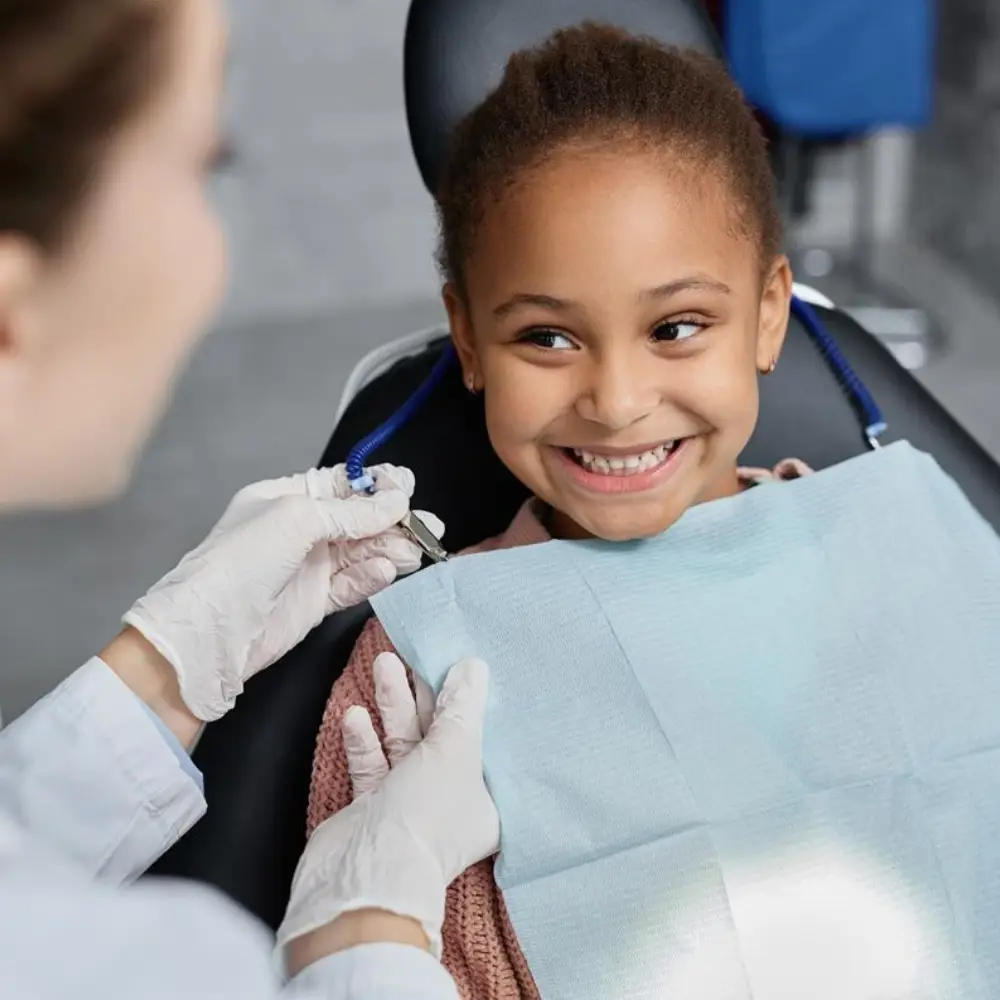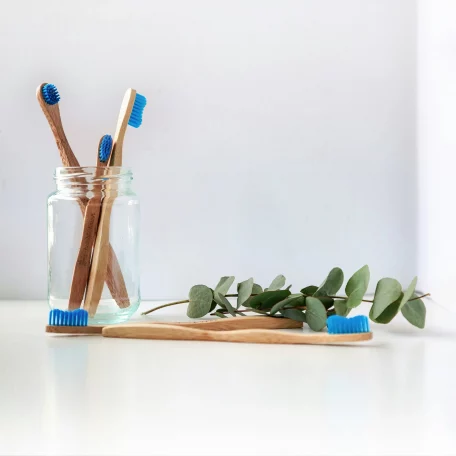Brushing your teeth is essential but are you doing it right? Many people unknowingly use improper tools or techniques, turning a healthy habit into a damaging one. From frayed gums to eroded enamel, the consequences of a toothbrush harming your smile are real and more common than you think.
In this blog, we’ll explore how toothbrushes can damage your oral health, warning signs your brushing routine is doing more harm than good, and the best brushing techniques, tools, and timing.
The Shocking Truth About Toothbrush Damage
What does “Toothbrush Harming” really mean? Common brushing habits can sometimes injure your teeth rather than helping and this is referred to as toothbrush harming. These include putting too much force on your teeth when you brush can eventually harm your enamel, upset your gums and make your gums recede, showing the sensitive parts of your teeth. Bristles that are too hard – Some people think hard bristles clean better, but they may hurt both your teeth and gums. It is often suggested that you use a soft-bristled brush for cleaning your teeth without hurting them.
If you move the brush too quickly or don’t angle it at your gums, it can leave some plaque and increase gum irritation. If you don’t change your toothbrush often enough, the browning bristles may no longer clean your mouth properly and might house germs, increasing your infection risk. As time goes on such habits might gradually harm your enamel, make the gums pull away and sway the alignment of your teeth. Showing this example highlights the damage poorly executed daily habits can do to your mouth.
The Science Behind Brushing Gone Wrong
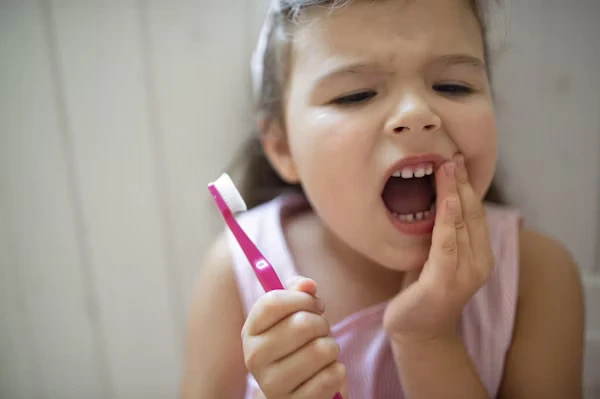
Brushing your teeth seems simple, right? Grab a toothbrush, scrub a bit, and you’re good to go. But what if your everyday routine is doing more harm than good? Believe it or not, many people unknowingly damage their teeth and gums with poor brushing habits despite their best intentions.
In this article, we’ll explore the science behind common brushing mistakes, how they affect your oral health, and what you can do to fix them for a healthier, brighter smile.
Enamel Erosion from Overbrushing
Your enamel is the strongest part of your body and works to protect your teeth. Even so, enamel is not completely immune to trouble. Brushing your teeth with a hard toothbrush or scrubbing them too hard can gradually remove the tooth enamel. If enamel wears away, it opens your teeth up to decay, sensitivity to temperature changes and often causes tooth pain. After enamel is gone, it will not grow back, so it’s important to prevent damage.
The GPD Dental tip is to protect your teeth, choose a toothbrush with soft bristles and move your brush in gentle circular strokes. This cleaning style clears your teeth of plaque without damaging your enamel or irritating your gums.
Gum Recession and Inflammation
Brushing incorrectly such as using a hard scrub and moving side to side, may draw the gums back from your teeth and expose the more sensitive parts of your roots. Having exposed dentin which is more sensitive to temperature and sweetness, can cause problems with daily meals and beverages. Too much force when brushing may result in irritated gums that become swollen, red and tender, looking much like gum disease. The issue is that sometimes these symptoms happen even if plaque buildup isn’t causing them which means the real problem is wear and tear.
Are You Brushing Too Hard?
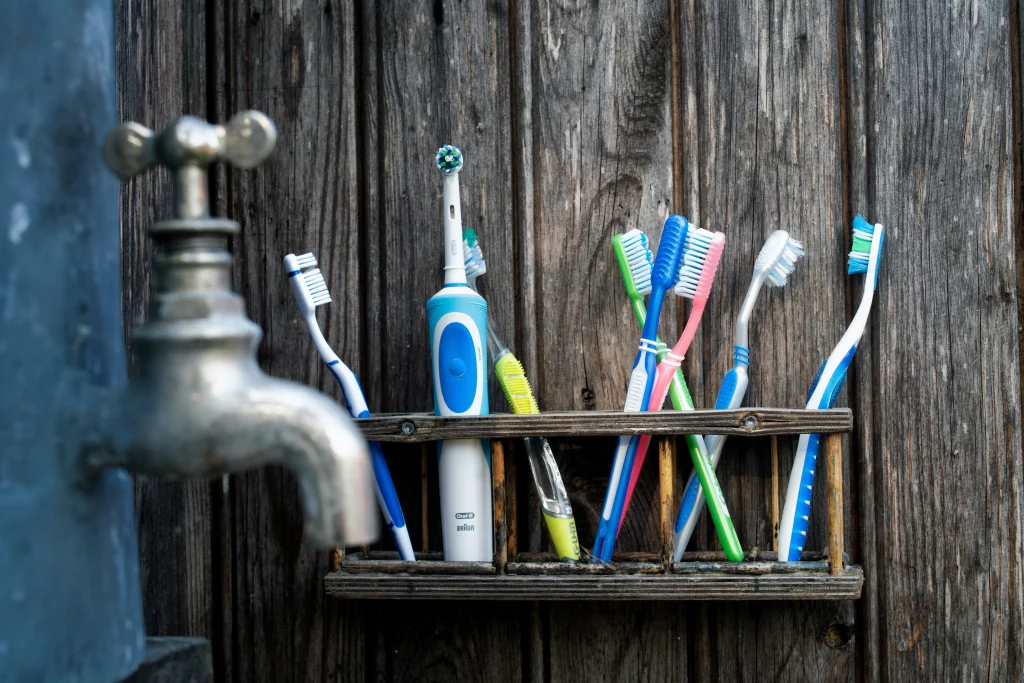
Brushing your teeth should keep your smile healthy, not harm it. Yet, many people mistakenly believe that scrubbing harder means cleaner teeth. In reality, aggressive brushing can wear down enamel, irritate your gums, and even lead to long-term dental damage. If your toothbrush looks frayed or your gums often feel sore, you might be doing more harm than good. Let’s explore the warning signs, risks, and how to brush the right way to protect your teeth for life.
The 2-Minute Rule with a Gentle Touch
Dental professionals recommend brushing your teeth for two minutes, twice a day to maintain optimal oral health. However, how you brush is just as important as how long you brush.
Avoid these common mistakes:
- Scrubbing back-and-forth vigorously: This harsh motion can wear down your enamel and irritate your gums.
- Using heavy force: Pressing too hard doesn’t clean better; it damages your teeth and soft tissues instead.
- Brushing immediately after acidic foods or drinks: Acid softens your enamel temporarily, so brushing right away can cause erosion.
Instead, follow these best practices:
- Use gentle circular motions to effectively remove plaque without harming your gums or enamel.
- Hold your toothbrush at a 45-degree angle toward the gum line—this helps clean both your teeth and the gum margin where plaque accumulates.
- Use a light grip on your brush to minimize pressure and protect your delicate oral tissues.
Mastering these techniques can make a huge difference in preventing gum recession, tooth sensitivity, and enamel wear while keeping your smile healthy and bright.
Choosing the Right Toothbrush
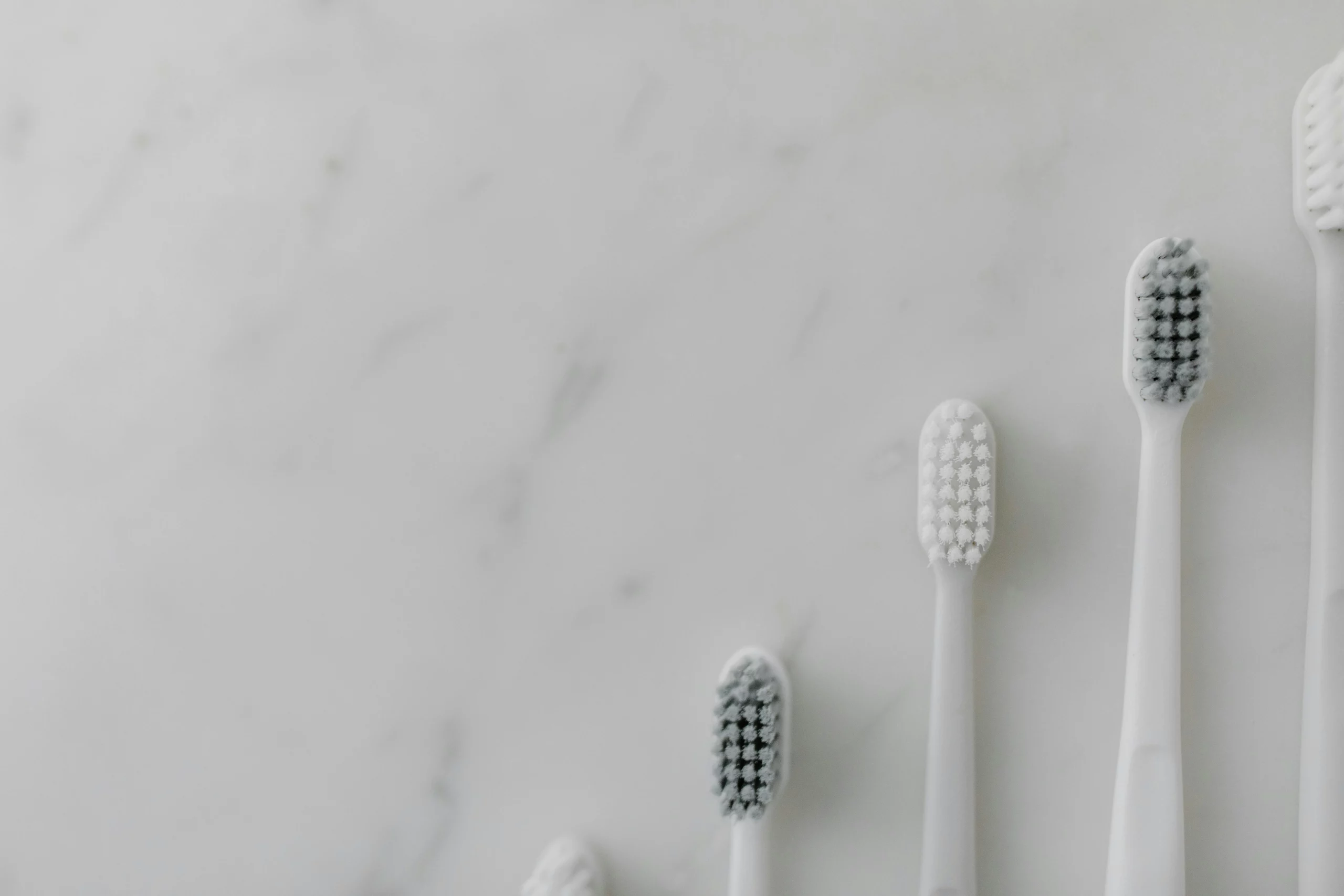
A healthy smile starts with the right tools and your toothbrush is at the top of that list. But with so many options available, from soft bristles to sonic-powered models, picking the right one can feel overwhelming. The truth is, the wrong toothbrush could be doing more harm than good, leading to enamel erosion, gum irritation, and even staining. In this section, we’ll break down how to choose a toothbrush that truly supports your oral health especially if you’re a coffee lover looking to keep your teeth white and strong.
Soft vs. Medium vs. Hard Bristles
Soft Bristles: Anyone can use soft-bristled toothbrushes because they clean your teeth well without hassling the enamel or your gums. Along with removing plaque, they also lower the dangers of wearing your teeth and receding gums.
Medium Bristles: Although bristles in the middle range appear to be the best at cleaning, they can more easily wear away tooth enamel and potentially cause gum problems as months pass. Dentists encourage caution with these, mainly for people whose gums or enamel is sensitive.
Hard Bristles: Having a toothbrush with hard bristles is usually not advised by dentists. Even though they’re considered good cleaners, their rough material can quickly damage the enamel on teeth, harm the gums and bring on tooth sensitivity.
Electric or Manual?
They help you clean your teeth more thoroughly and evenly by giving you more controlled strokes than manual alternatives. These utensils keep people from overpressuring gums or teeth which could harm the enamel. If you are choosing an electric toothbrush, make sure to look for certain important features.
Sensors will tell you if you’re brushing your teeth and gums too firmly to avoid abuse. A timer in the handle helps you reach the two-minute standard for a deep cleaning of your teeth. Special heads that rotate and move back and forth to get rid of plaque from every part of your teeth. That’s why electric toothbrushes are such a good choice for both dental care and keeping your smile healthy.
When to Replace Your Toothbrush
A toothbrush that is frayed no longer cleans very well and may also lead to tiny cuts in your gums and soft cheek tissues. When bristles get old and worn out, they won’t take out plaque effectively, making you more likely to experience cavities and gum inflammation. It’s important to replace your toothbrush at least every 3 to 4 months—or it could be sooner if you notice:
- It is easy to notice that the bristles are chewed, turned sideways or spread apart
- You’ve been feeling unwell recently, since bacteria may remain on your toothbrush.
- You end up dropping your toothbrush onto an unsterile surface, giving germs a chance.
A good reminder for you: Add a recurring event to your calendar or phone to replace your toothbrush each time a new season arrives. Doing this keeps your oral hygiene routine lively and helpful all year long.
Common Myths That Could Be Harming Your Smile
When it comes to oral health, there’s a lot of misinformation floating around. Believing these common myths can lead to habits that actually harm your teeth and gums instead of protecting them. Let’s bust some of the most widespread misconceptions so you can keep your smile healthy and bright for years to come.
| “Hard bristles clean better” | Truth: While hard-bristled toothbrushes might seem to remove more plaque initially, they can also strip away enamel and damage sensitive gum tissue over time. For a safer, more effective clean, it’s best to stick with soft-bristled toothbrushes recommended by dental professionals. |
| “You should brush right after every meal” | Truth: It’s important to wait at least 30 minutes after eating, especially after consuming acidic foods or drinks, before brushing your teeth. Brushing too soon can grind the acids deeper into your enamel, accelerating erosion and weakening your tooth’s protective layer. |
| “Bleeding gums mean I should brush harder” | Truth: Bleeding gums are a clear sign of irritation or early gum disease, not a signal to brush harder. In fact, scrubbing more aggressively can worsen the problem. Instead, try brushing gently with a soft-bristled toothbrush and flossing daily to help reduce inflammation and promote healthier gums. |
Brushing vs. Technique: What Matters More?
You could invest in the most expensive, high-tech toothbrush on the market, but if your brushing technique is off, your oral health results will still suffer. In fact, technique often matters more than the tool itself. Proper brushing motions, timing, and pressure are what truly keep your teeth and gums healthy no matter which toothbrush you use.
Quick Technique Checklist:
✔ Use a soft-bristled toothbrush
✔ Brush in gentle, circular motions
✔ Spend 30 seconds on each quadrant of your mouth
✔ Brush your tongue to remove bacteria and freshen breath
✔ Don’t forget to floss!
When to See a Dentist
If you notice any of the following signs, it’s important to take action and schedule a dental consultation promptly:
- Persistent tooth sensitivity to hot, cold, or sweet stimuli
- Gums pulling away or receding from your teeth
- Discoloration or shiny grooves appearing at the base of your teeth
These symptoms may indicate that your current brushing habits have caused enamel wear or gum damage. Early intervention can help prevent further problems and restore your oral health.
Book an Appointment with GPD Dental Today to get personalized care and expert guidance for a healthier smile.
Final Thoughts – Protect Your Smile, One Brush at a Time
It’s the technique you use when brushing, not just the fact that you brush, that counts. You should strive to wipe down, not attack with harsh scrubbing. Following gentle methods, using a proper toothbrush and noticing your posture and stress (grads to remote work) all help your teeth, gums and become lifelong habits. Do you want professional help fixing damage from brushing or looking after your oral health? Come to GPD Dental in Gaithersburg for all your dental needs – your oral health is important.
Frequently Asked Questions (FAQs)
1. Can my toothbrush really cause gum recession?
Yes, brushing too hard or using a hard-bristled toothbrush can cause your gums to gradually recede over time. This exposes the sensitive roots of your teeth, leading to discomfort, increased risk of decay, and even long-term damage. To protect your gums, always choose soft-bristled brushes, use gentle, circular motions, avoid scrubbing back and forth with excessive pressure. Your gums are delicate, treat them with care to keep your smile healthy.
2. How do I know if I’m brushing too hard?
Look for these signs that you may be brushing too hard:
- Frayed bristles within just a few weeks of use
- Increased tooth sensitivity to hot, cold, or sweet foods
- Visible gum irritation or recession
Try holding your toothbrush with just your fingertips rather than your whole hand. This helps you apply gentler pressure and avoid long-term damage to your teeth and gums.
3. Should I use an electric toothbrush?
Electric toothbrushes are a smart choice for many people, especially if you:
- Tend to brush too hard – built-in pressure sensors can alert you to lighten up
- Have limited mobility – like arthritis or other conditions that make manual brushing difficult
- Want a more consistent, thorough clean – oscillating or sonic technology does the work for you
These brushes take the guesswork out of technique and can help protect your enamel and gums from damage caused by overbrushing. Plus, many models include timers to ensure you’re brushing the recommended two minutes.
4. Can I use whitening toothpaste every day?
Using whitening toothpaste as instructed is safe and can be very effective. The majority use mild abrasives or chemicals to remove surface stains from your teeth. Plus, some formulas are better than others.
It’s important to look for the following symptoms:
- Products with excess abrasives can ruin your teeth’s enamel with repeated use
- When your gums become tender, this may mean that your dental enamel is starting to wear out
What should you do in these moments?
- Use toothpaste designed for sensitive teeth alternately as well.
- To be sure a product is safe and reliable, find the ADA Seal of Acceptance.
- Ask your dentist if you aren’t sure which toothpaste to buy.
Extra bright and sparkling teeth can usually be achieved more safely and more effectively using in-office whitening than toothpaste alone.

